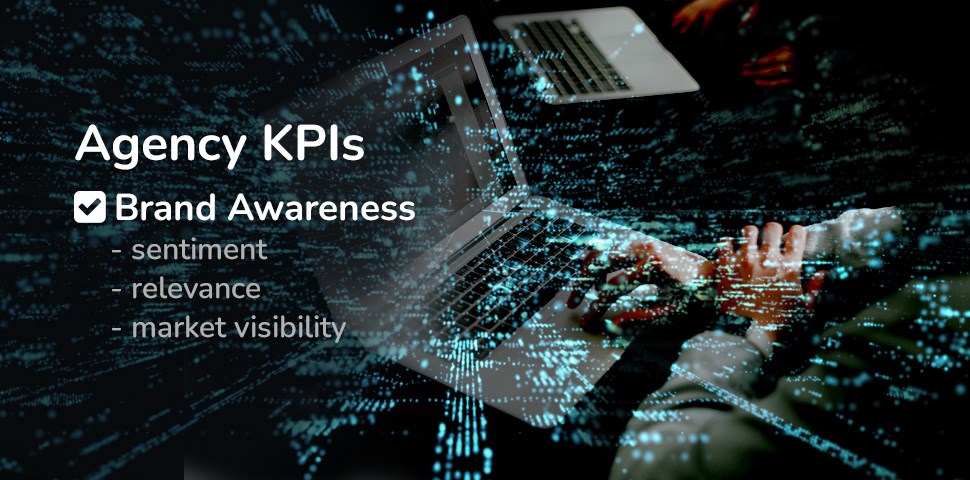Many companies sink money into digital marketing and get very little out of it.
Return on ad spend (or ROAS) measures the effectiveness of an advertising campaign and whether it generates results. In the not-so-distant past, ROAS effectiveness was based on how many eyeballs saw a TV ad, how many cars drove past a billboard, or how many listeners were tuned in to a particular radio station at a specific time.
Enter digital and social advertising – and the ability to track every cent through data.
Ad data is generated when someone sees a social or display ad in their feed or on a website, or they click on a Google ad when they search for something. These data-driven insights are a powerful tool for understanding who your customers are, what they want, and when they want it.
But ad data also reveals whether your digital advertising efforts are working or not – and that's all you really want to know. At the end of the day, you want people to convert into paying customers, or you want potential customers to know about you.

What is ROAS?
Say you made R1000 for every R100 spent on a digital ad campaign. This means your ROAS ratio is 10:1. We’re channelling high school maths here, but to work out your current return-on-ad-spend ratio, just divide how much you make by the amount of money you spent on ads.
ROAS is handy because you can use it to gain insight into how a single or several campaigns perform. It’s not just limited to once-off ad performance either; you can use it to see if your email marketing campaign for the past few months has been landing, too.
It’s important to remember that ROAS will give you a general idea of what’s working and what’s isn't, and it isn’t as drilled down as costs per conversion or click-through rates. But ROAS is a good way to see if your digital marketing agency is nailing or failing it.
What is a good ROAS ratio? That’s like asking, ‘When will load-shedding end?’. It’s hard to say because it depends on your business and industry – and it’ll depend on your endgame. For example, if your goal is brand awareness, like increasing your company’s LinkedIn following or newsletter sign-ups, you’ll have a lower ROAS, because it can be difficult to link a follow or sign-up to revenue.
ROAS, ROI, and KPIs
That’s a lot of acronyms but stay with me. When it comes to ad spend, measuring different metrics gives you a complete idea of how successful a campaign is, which is why you always need to look at the bigger picture. While ROAS measures the effectiveness of a specific campaign, ROI (or return on investment) looks at your business as a whole.
ROI takes things like the entire cost of a marketing campaign (not just ad spend), and it determines whether your business is making a profit.
Remember we said it’s difficult to measure brand awareness? Well, we lied. Brand awareness has an ROI, because if people don’t know about you, they can’t buy your products or services. On average, it takes seven interactions until a customer converts; if your company is top of mind, it can be the final trigger that transforms intent into action.
At Firewater, we believe that brand awareness – which includes sentiment, relevance, and market visibility – should be a big part of your agency’s KPIs. But brand awareness should also be a part of your business’s KPIs because it affects your bottom line.

Track and tweak
With social media, it’s tempting for brands to throw money at a few Facebook ads, call it a ‘campaign’, and assume this will bring in business. What these guys forget (or don’t know) is that a social media ad’s effectiveness can be tracked and tweaked.
According to the 2022 Sprout Social Index, more marketers (like us) are using social to track vanity metrics and measure other areas of business. That’s because a campaign can generate viral views but zero sales. Conversely, you can spend hardly anything on ads and get some solid, high-worth leads – it all comes down to letting data drive your strategy.
In fact, 65 percent of marketers now use social data to inform their digital marketing strategy. And understanding how your customers respond to social ads punting your products or services is one way you can convert them. Importantly, if something isn’t working – like if your ad spend isn't giving you results – you can adapt your game-plan based on what the data tells you.
Digital enables a data-led approach. Whether you’re measuring 'hard' elements like click-through rates and conversions, or less tangible aspects like sentiment and awareness, let the data lead you.
You'll get more out of your marketing, and you'll know exactly where every cent is going.
Want to stop sinking money into a digital-marketing black hole? Contact us; we’ll show you how to get bang for your bucks.




